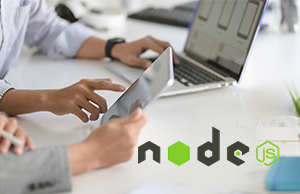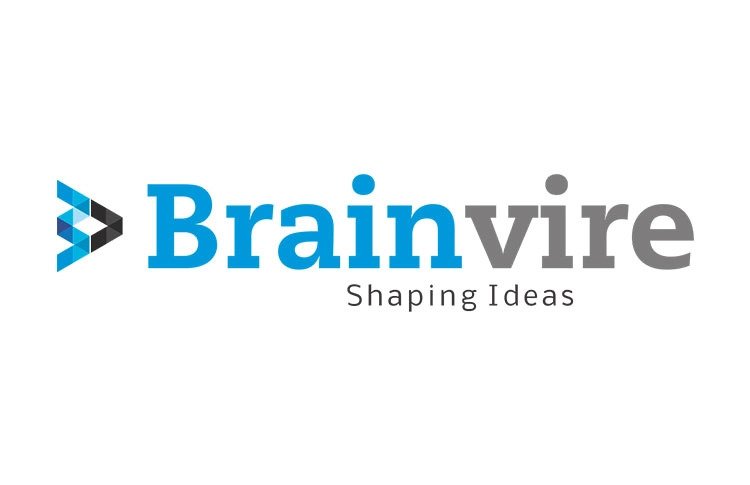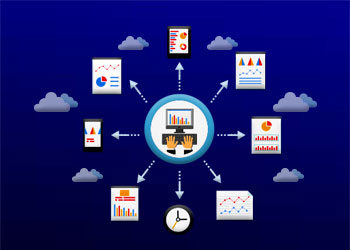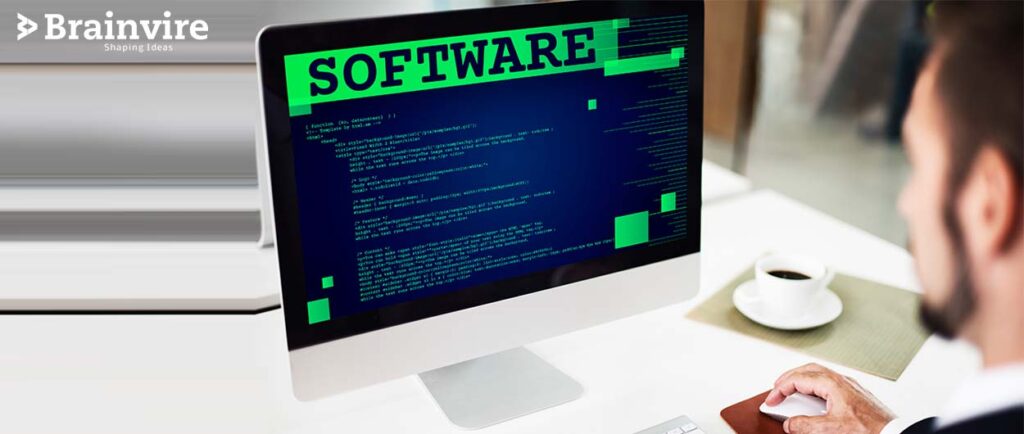
Developing new software is not an easy task. Making sure the project meets all of its deadlines, stays on budget, and delivers high-quality work can be daunting, to say the least! But there are some models that help make this process easier than others- like SDLC (Software Development Life Cycle).
What is the SDLC Model and how does it improve the quality of the process ?
The software development life cycle model is used in project management to define various stages of software development. It is a detailed plan that describes how to develop, maintain, replace, and change or improve specific software. An SDLC model can literally make or break your project. A proper model should be chosen according to time constraints, budgeting needs, quality expectations from stakeholders.
The life cycle defines a methodology for improving software quality and the development process as a whole.
In today’s world, there are more than 50 different models for software development to choose from. No model is perfect, and each one has its pros and cons depending on the needs of a given project or team. After 20 years in this industry, we have sifted through those 8 most popular software development life cycle models with an eye towards their core features so you can be successful now as well as tomorrow.
Knowing about the basic stages of software development is very crucial. So let’s explore them one by one to understand each of the SDLC models and figure out which one to choose to make our project successful.
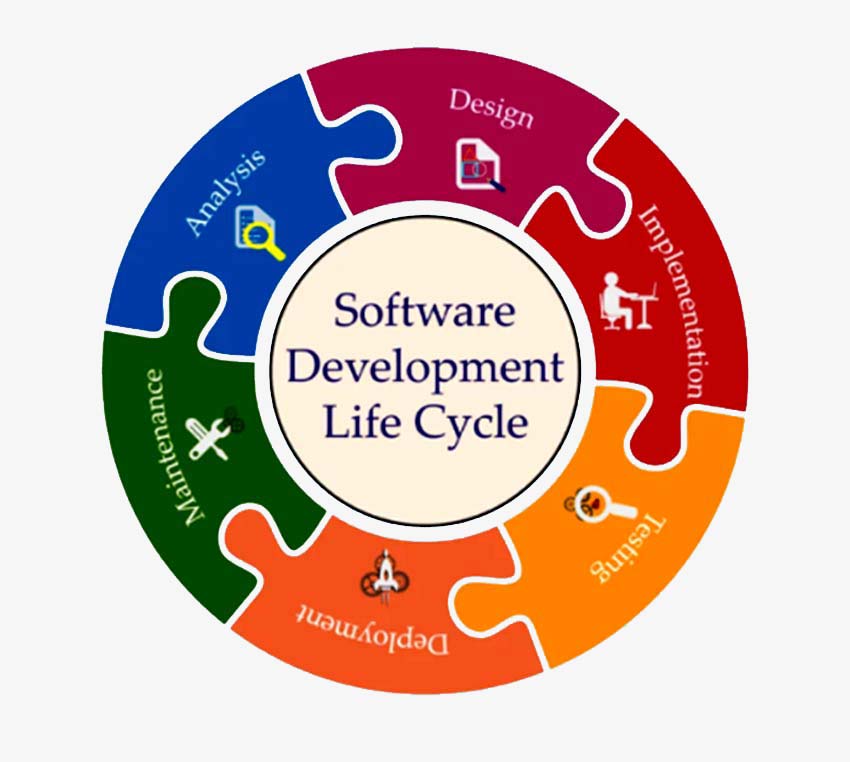
What are the Basic stages of SDLC?
Stage 1: Planning and Analysis
Each software development life cycle model begins with an analysis in which the process stakeholders discuss the requirements for the final product. The goal of this stage is to define the system requirements in detail. Moreover, it is necessary to ensure that all process participants understand the tasks and how each requirement can be implemented.
Stage 2: Creating Project Architecture
Developers usually design the architecture during the second phase of the software development life cycle. All of the technical questions that may arise during this stage are discussed by all stakeholders, including the customer.
Stage 3: Development and Programming
Following approval of the requirements, the process advances to the next stage – actual development. Programmers begin writing source code here, keeping previously defined requirements in mind. System administrators configure the software environment, while front-end programmers create the program’s user interface and the logic to communicate with the server.
Stage 4: Code Testing
Debugging occurs during the testing phase. All code flaws discovered during development are identified, documented, and returned to the developers for resolved and the software workflow has been stabilized.
Stage 5: Deployment
When the program is complete and free of critical flaws, it is time to make corrections. The testing procedure is repeated until all critical issues have been available to end-users. The tech support team will join after the new program version is released. This department provides user feedback, as well as consultation and support to users during exploitation. This phase also includes updating selected components to ensure that the software is up to date and secure.
What are the top 8 SDLC Models for your software development project?
1. Waterfall Model
The waterfall process is a method of software development that moves in an orderly cascade, with each stage having concrete deliverables and being strictly documented. Each stage has its own deliverables and documentation, with the next stage requiring completion before starting on it. Therefore, the software requirements cannot be re-evaluated at a later stage of development.
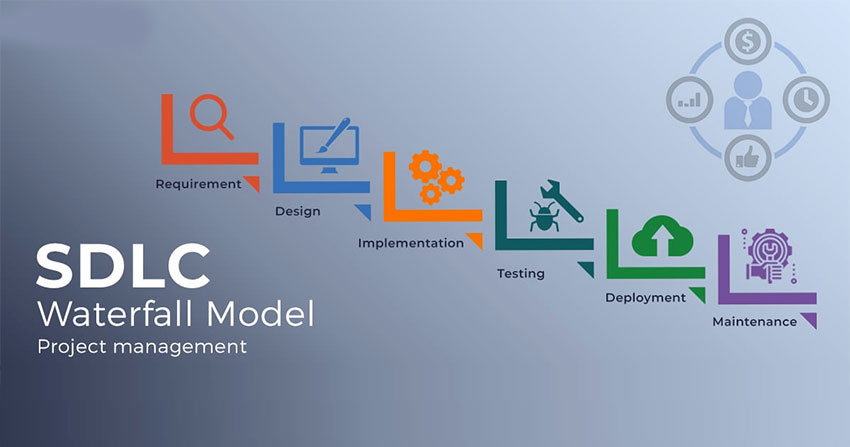
There is also no way to see or test the software until the final development stage is completed, resulting in high project risks and unpredictable project outcomes. As a result, testing is frequently rushed, and errors are costly to correct.
Use Cases
- Small or medium-sized projects with well-defined, unchanging requirements.
- Projects that make use of a well-known technology stack and tools.
2. Validation and Verification Model
The V-model (Validation and Verification Model) is a project management model that can produce high-quality work, but it becomes very costly and time-consuming in the process.
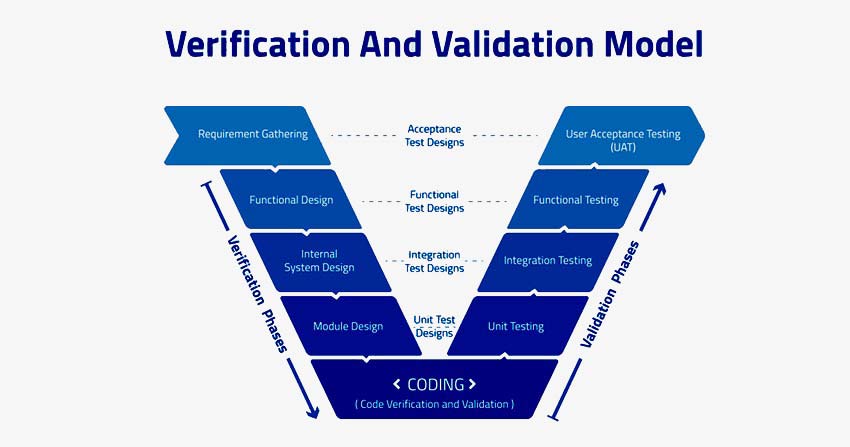
The development phase of this methodology has its own set of limitations. The development mistakes are costly, and it’s not easy to identify them in the beginning. As seen in the waterfall model, requirements can be gathered in the beginning, but they cannot be changed later.
Use Cases
- Projects in which failures and downtime are not considered acceptable.
3. Incremental and Iterative Model
The development process in the incremental model is like building a Lego structure.
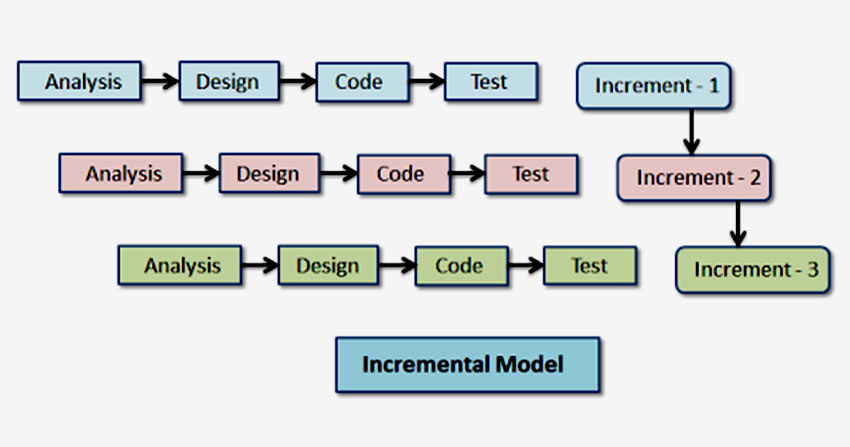
Each iteration of work splits into smaller pieces, with new modules being added at each step without touching any previous ones. Software development can be done in either a parallel or sequential manner. Parallel development is quick and inexpensive, whereas sequential development is time-consuming and costly.
In the iterative model, the software transforms and grows in subsequent iterations. The number of these iterations adds up to previous ones, but the basic design remains unchanged throughout this process.
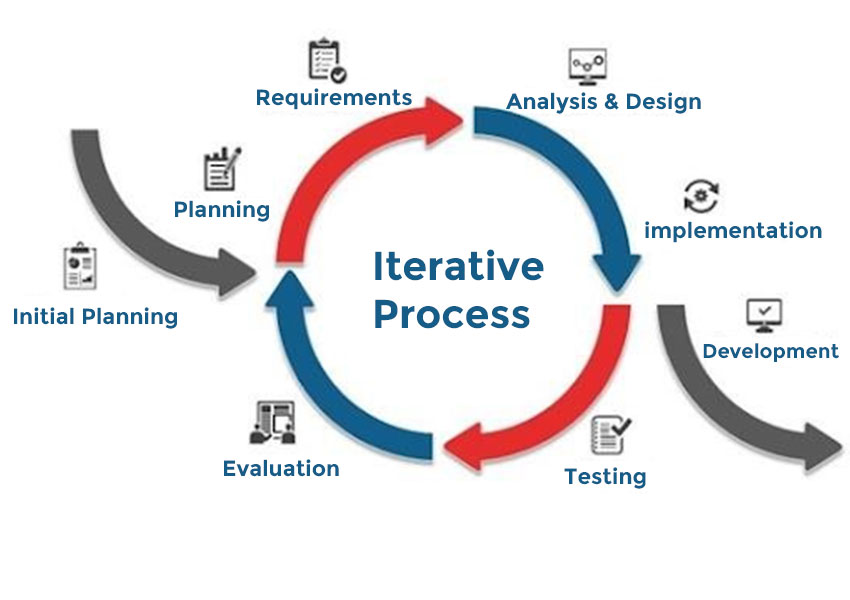
The project is delivered part by part with no need for specification from the start, as changes can be made to specifications during the development stages.
This SDLC model is a great way for customers to be involved with how their project goes because it often entails some small requirements amendments during the development process.
Use Cases
- Large, mission-critical enterprise applications made up of loosely coupled components.
4. Spiral Model
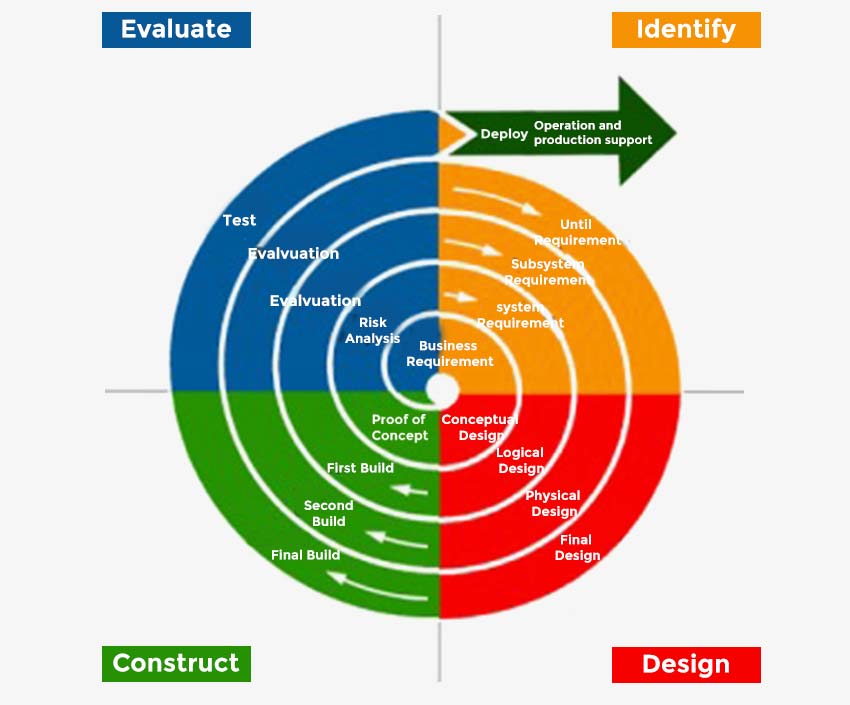
One way to use the Spiral Model is by hiring experts in risk evaluation. The four essential activities in this cycle are planning, risk analysis, prototype creation, and customer feedback during review or exploration for previous tasks completed on the project.
It repeats itself as an extension on how long your project will take because each cycle has feedback from customers, which allows them to input into the review process so they can explore certain aspects while still providing their experiences with what would be needed to improve upon any flaws found within prototypes or products.
Use Cases
- Projects that are both large and complex.
- The introduction of a new service or product, as well as research and development activity.
5. Rational Unified Process Model
The rational unified process is a software development process that focuses on requirements gathering, prototyping, and defining quality standards in order to produce high-quality software.
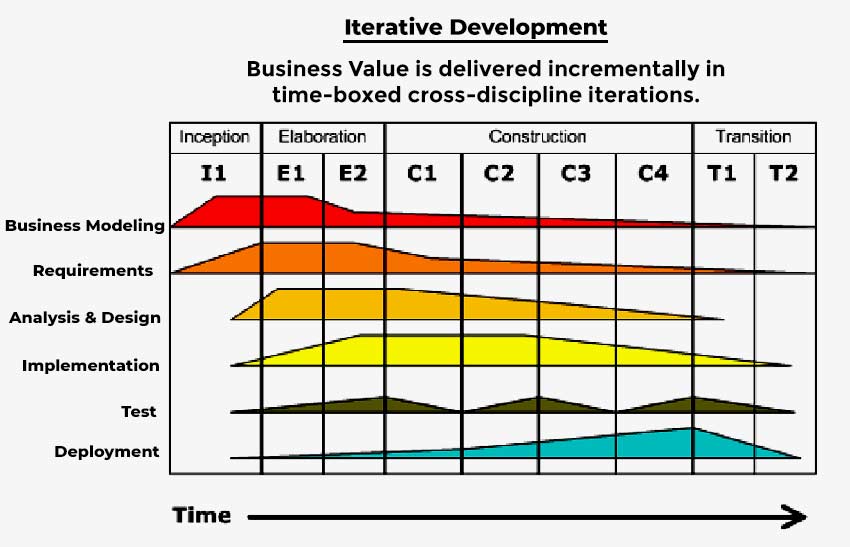
This process can provide benefits such as ensuring good design, creating an organized process, and increasing productivity in software development.
Use Cases
- Large and high-risk projects, particularly use-case-based development.
6. Agile Group
The Agile umbrella is small but mighty. It’s a group of models that provide fast and efficient solutions for the modern business world, focusing on customer feedback, strong communication with stakeholders as well as iterative development cycles to produce quality solutions in weeks. They are more concerned with detailed documentation than testing.
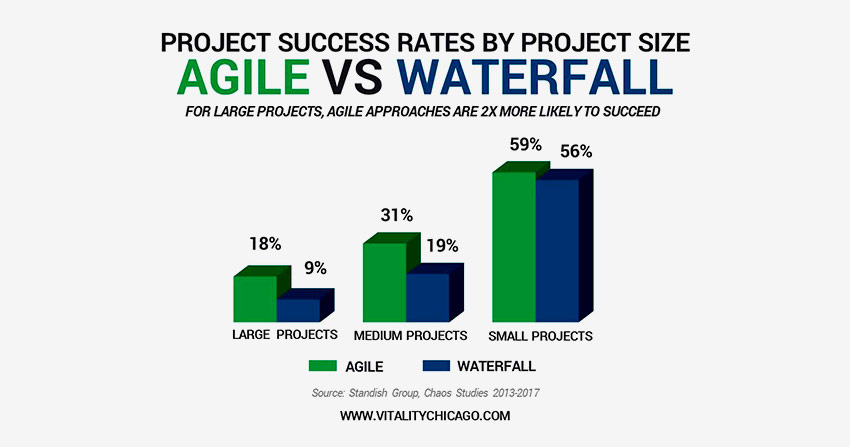
As there is no documented software description, identifying problems when maintenance is required takes longer. However, agile programs are constantly updated, changed, evolved, and improved.
Also, when it comes to software development, it is wise to outsource the work as it is more convenient and cost-effective.
Agile software development necessitates a much higher level of contribution from all the parties involved. As a result, one or both parties must make compromises in their traditional processes in order to adapt to the task at hand. This necessitates the use of an experienced software partner with whom you can successfully collaborate to develop customized software solutions based on your needs.
Your agile software development requires someone like Brainvire. From ideation to delivery, our dedicated agile software development team is present at every stage of your success journey.
We can work with you to eliminate the hassle of your day-to-day software development needs by utilizing our battle-tested agile methodologies. We’ve done it for a variety of industry verticals all over the world, and we’d be delighted to do it for you as well.
Use Cases
- Startup initiatives that require immediate feedback from end-users.
- Mid-sized projects in which business requirements cannot be confidently translated into detailed software requirements.
- Large projects can be broken down into small functional parts and developed incrementally over each iteration.
7. Scrum Process Model
The scrum process is a software development process that focuses on short bursts of work done at any given time to produce results quickly like agile process models.
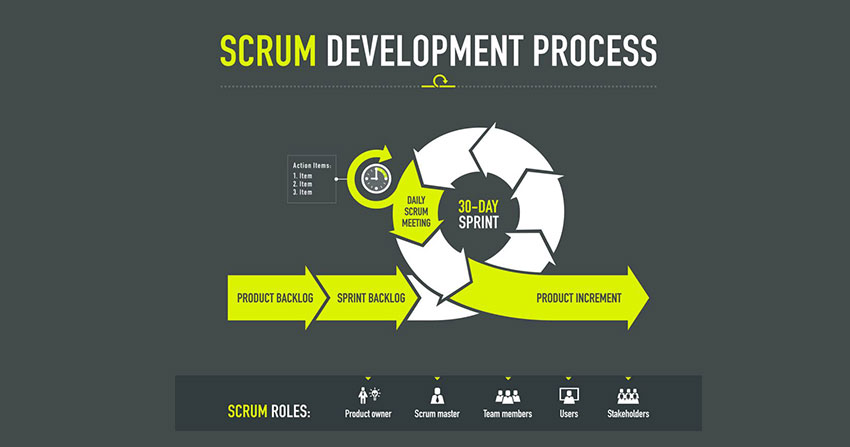
The main benefit it provides for companies is the ability to see progress because sprints are shorter than other processes, which means you can see the process progress in a shorter time frame.
8. Extreme Programming
The extreme programming process is a software development process that focuses on the use of unit tests and other new techniques to ensure high-quality standards in software design and implementation.
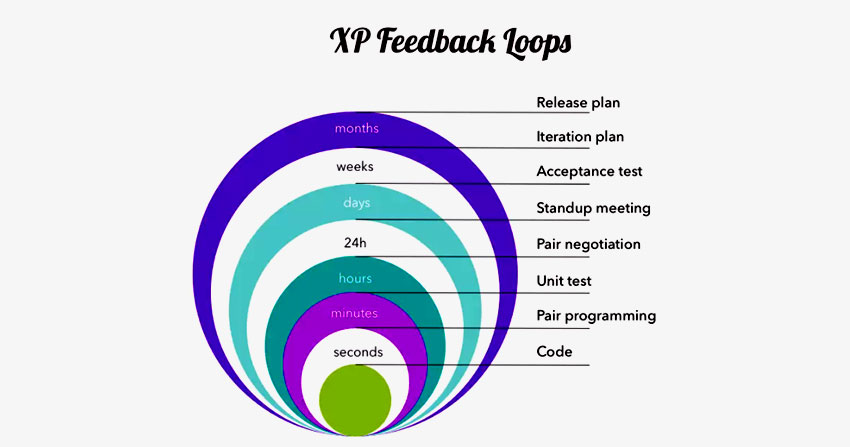
The main benefit that this process can provide for companies is increased code reliability because it allows for process testing and code reviews to be done at every stage of the process.
Summarization of models in charts
Using the research data as groundwork, we compared the models in terms of core features – time, cost, and quality. All estimates apply to small applications with code consisting of 1,000 functions.
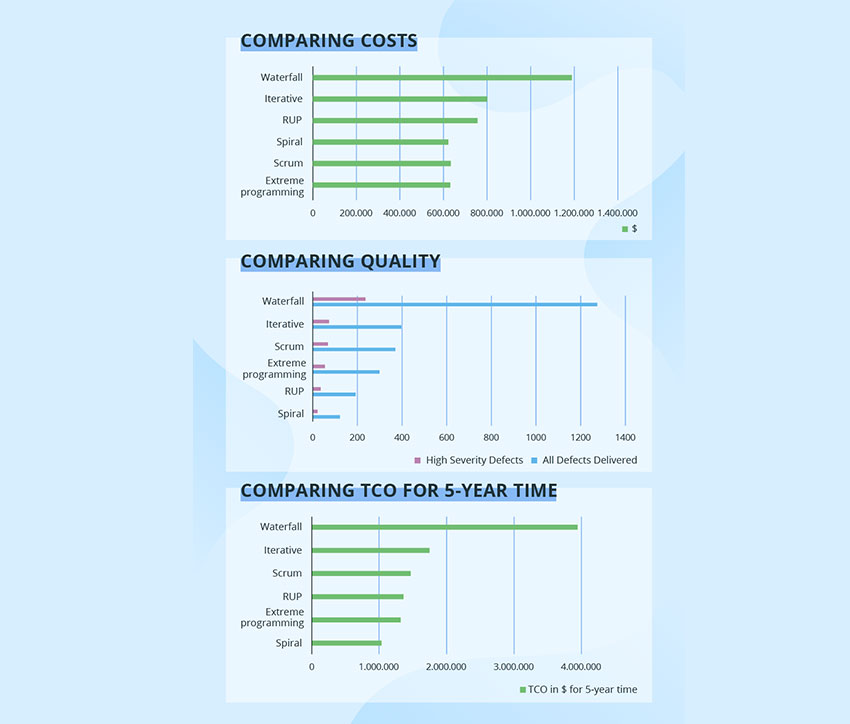
Are you looking for a professional to help you choose the best model for your company?
Get in touch with us right away!
What’s the best way to develop software?
There is no easy answer. Agile can be multifunctional but has its flaws because it doesn’t work for every customer, and there are too many variations between industries that have different needs when it comes to development timeframes. With so much information out on what constitutes a good model of SDLCs, you might feel like this world is getting more complicated instead of less!
Various models have been developed through SDLC evolution which reflects a variety in development expectations and needs that are appropriate for different businesses. Ultimately it’s not about finding one perfect model but rather determining what will work best with your company culture.
FAQs
The most popular SDLC (Software/System Development Life Cycle) model is Agile. Agile is a group of models that give quick, efficient solutions based on the modern business world. Its primary focus involves customer feedback, stakeholder communication, and iterative development cycles for quality solutions. That being said, Agile can be multifunctional but has flaws. The model may not work for every customer. With the many variations, different requirements, and development timeframes of industries, the best software process model is the one that works best for you.
The 7 phases of the Software/System Development Life Cycle are:
– Planning
– AnalysisÂ
– Project Architecture
– Development & Programming
– Testing
– Deployment
– Maintenance
Like most other SLDC models, the Waterfall model can be grouped into 5 main stages:
– Planning
– Design
– Implementation
– Testing
– MaintenanceÂ
The Waterfall model moves in an orderly cascade, with concrete deliverables and strict documentation at each stage. You can only move to the next stage once your deliverables and documentation of the previous stage are complete. Therefore, you cannot re-evaluate your requirements at a later stage nor test the software until the outcome is complete. The Waterfall model can, as a result, pose high risks and unpredictable outcomes and are best suited for well-defined small/medium-sized projects with set requirements or projects that use a renowned technology stack and tools.

